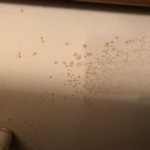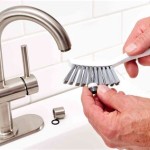Venting a Bathroom Fan Through the Attic Wall: A Guide to Proper Installation
Bathroom fans are essential for removing moisture and odors, maintaining a healthy indoor environment. Properly venting a bathroom fan is crucial for its effectiveness and to prevent moisture buildup that can lead to mold and mildew growth. One common method of venting a bathroom fan is through the attic wall. This approach offers several advantages, including ease of access and shorter duct runs, but it also raises concerns about potential condensation and insulation issues. This article will explore the key considerations and steps involved in venting a bathroom fan through the attic wall.
Understanding the Importance of Proper Venting
Bathroom fans are designed to exhaust humid air and odors from the bathroom to the exterior of the house. When a bathroom fan vents into the attic space instead of directly outside, the moisture laden air can condense on surfaces such as rafters, joists, and insulation, creating a breeding ground for mold and mildew. This can damage your attic structure, compromise air quality, and potentially lead to respiratory issues. Effective ventilation minimizes the risk of these problems and ensures the fan functions efficiently.
Steps Involved in Venting a Bathroom Fan Through the Attic Wall
Venting a bathroom fan through the attic wall involves a specific set of steps to ensure proper installation and optimal performance:
1. Choose the Right Fan and Ductwork
The first step involves selecting a suitable bathroom fan with sufficient airflow capacity to handle the bathroom's size and humidity levels. The fan should be equipped with a built-in backdraft damper to prevent air from flowing back into the bathroom when the fan is not running. Choose a duct material, such as rigid PVC or flexible aluminum, that is compatible with the fan and appropriate for attic conditions. Ideally, use a duct that is no longer than 10 feet for optimal air movement.
2. Access the Attic
Gain access to the attic space by using an existing attic hatch or creating a new opening. Once in the attic, identify the location for the vent termination point on the exterior wall of the house. Select an area that is easily accessible for maintenance and is not close to any other vents or openings.
3. Install the Vent Termination
Install a vent termination on the chosen location on the exterior wall. This component, known as a roof vent, is typically a rectangular or round opening that is securely mounted to the wall. Ensure the vent termination has a weatherproof cover to prevent moisture from entering the attic.
4. Run the Ductwork
Route the ductwork from the bathroom fan to the vent termination, using a combination of straight sections and elbows to navigate around obstacles. Secure the ducts to the attic rafters using duct clamps or straps. Ensure the ductwork is free of kinks or sharp bends that can restrict airflow.
5. Seal the Duct Joint
Seal all connections and joints between the fan, ductwork, and vent termination using a sealant that is compatible with the materials used. This step is crucial to prevent air leaks that can reduce the fan's effectiveness and create noise.
6. Insulate the Ductwork
Insulate the ductwork with a layer of foam insulation, especially if the ductwork passes through unconditioned attic space. This helps prevent condensation from forming on the ductwork and ensures the air reaching the vent termination is warm.
7. Install a Condensation Trap
Consider installing a condensation trap in the ductwork, especially if the vent terminates above the roofline. A condensation trap is a downward-sloping section of pipe that collects condensation before it reaches the vent termination. This helps to minimize the amount of moisture entering the attic and reduces the risk of ice dams forming in the winter.
Key Considerations for Venting a Bathroom Fan Through the Attic Wall
While venting a bathroom fan through the attic wall offers advantages in terms of accessibility and shorter duct runs, it also presents some challenges that require careful consideration.
1. Condensation Control
Condensation is a major concern when venting a bathroom fan through the attic. To prevent condensation from forming, consider the following strategies:
- Use insulated ductwork:
- Install a condensation trap:
- Ensure proper attic ventilation:
- Maintain adequate attic insulation:
2. Attic Ventilation
Sufficient attic ventilation is crucial for preventing moisture buildup and ensuring a healthy indoor environment. Ensure the attic has proper gable vents and soffit vents to allow air to circulate and prevent condensation from forming.
3. Insulation Considerations
When venting through the attic, it is essential to ensure the insulation is properly installed and does not block the airflow from the fan. The bathroom fan's exhaust air should be routed to the attic and subsequently vented outside avoiding any obstructions.

Bathroom Vent Piping To Near Exterior Inspecting Hvac Systems Internachi Forum

Bathroom Exhaust Fan Can Vent Out Through The Wall Or Up Roof Building America Solution Center

Installing A Bathroom Fan Fine Homebuilding

Bathroom Exhaust Fan Venting Into Attic Diy Home Improvement Forum

Bathroom Exhaust Vents In Your San Antonio Area Home Jwk Inspections

Bathroom Duct Venting

Air Sealing Bathroom And Kitchen Exhaust Fans Building America Solution Center
:quality(70)/arc-anglerfish-arc2-prod-tronc.s3.amazonaws.com/public/5FSXZISCPFD5POTYHFR4DREQKM.jpg?strip=all)
The Best Way To Vent A Bathroom Fan

Bathroom Fan Vents Improperly Placed Near Attic Roof Home Depot Heater Bathtub House Remodeling Decorating Construction Energy Use Kitchen Bedroom Building Rooms City Data Forum

Why Does My Bathroom Ceiling Fan Drip Foothills Roofing Calgary
Related Posts







